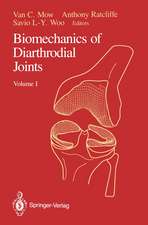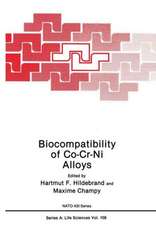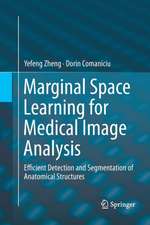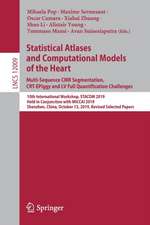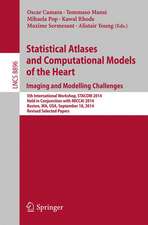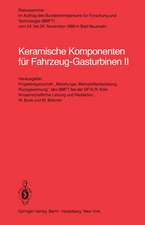Artificial Intelligence for Computational Modeling of the Heart
Editat de Tommaso Mansi, Tiziano Passerini, Dorin Comaniciuen Limba Engleză Paperback – 28 noi 2019
- Presents recent advances in computational modeling of heart function and artificial intelligence technologies for subject-specific applications
- Discusses AI-based technologies for robust anatomical modeling from medical images, data-driven reduction of multi-scale cardiac models, and estimations of physiological parameters from clinical data
- Illustrates the technology through concrete clinical applications and discusses potential impacts and next steps needed for clinical translation
Preț: 717.78 lei
Preț vechi: 939.55 lei
-24% Nou
Puncte Express: 1077
Preț estimativ în valută:
137.34€ • 143.79$ • 113.65£
137.34€ • 143.79$ • 113.65£
Carte tipărită la comandă
Livrare economică 31 martie-14 aprilie
Preluare comenzi: 021 569.72.76
Specificații
ISBN-13: 9780128175941
ISBN-10: 012817594X
Pagini: 274
Dimensiuni: 191 x 235 x 18 mm
Greutate: 0.48 kg
Editura: ELSEVIER SCIENCE
ISBN-10: 012817594X
Pagini: 274
Dimensiuni: 191 x 235 x 18 mm
Greutate: 0.48 kg
Editura: ELSEVIER SCIENCE
Cuprins
1. Introduction
2. Multi-scale Models of the Heart for Individualized Simulations
3. Learning Cardiac Anatomy: from Images to Heart Avatar
4. Data-Driven Reduction of Cardiac Models
5. Machine Learning Methods for Robust Parameter Estimation
6. Clinical Applications
7. Conclusion and Perspective
2. Multi-scale Models of the Heart for Individualized Simulations
3. Learning Cardiac Anatomy: from Images to Heart Avatar
4. Data-Driven Reduction of Cardiac Models
5. Machine Learning Methods for Robust Parameter Estimation
6. Clinical Applications
7. Conclusion and Perspective






